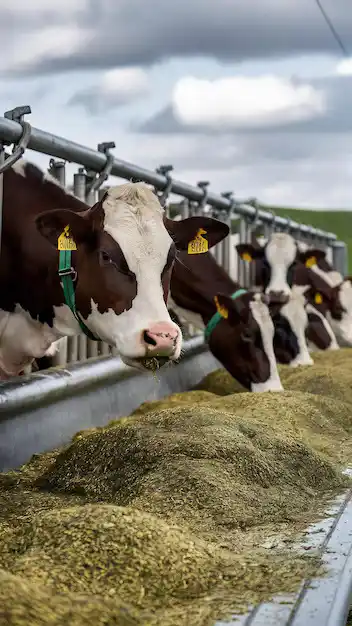
Nile Feeds and Cereals Supplies
February 26, 2025 at 05:08 PM
✨️✨️HOW TO MAKE SILAGE FOR USE IN DRY SEASON AND THE NUTRITIONAL BENEFITS IN SILAGE ✨️✨️💚💚💚💚
How to Make Silage for Use in the Dry Season
Learn with #nilefeeds 💚💚
Silage is a high-moisture, fermented fodder that is an excellent feed for livestock during the dry season when fresh forage is scarce. Here’s a step-by-step guide on how to make quality silage:
1.💚 CHOOSE SUITABLE CROPS
Common Silage Crops: Maize, Napier grass, sorghum, millet, alfalfa, and other green forages.
Harvesting Time: For maize and sorghum, harvest when the grain is at the dough stage. For grasses, cut when they are young and have high nutrient content.
2.💚 PREPARE FOR HARVESTING
Chop the Forage: Chop into small pieces (1-2 inches or 2.5-5 cm) to make compaction and fermentation easier.
Ensure Correct Moisture Content: The ideal moisture content is 60-70%. You can test this by squeezing a handful—if a few drops of water appear, it's good.
3.💚 FIll AND COMPACT THE SILO
Types of Silos: You can use pit silos, trench silos, plastic bags, or drums.
Filling: Add chopped forage in layers, compacting each layer thoroughly to remove as much air as possible. This prevents spoilage.
Additives (Optional): You can add molasses, salt, or commercial silage inoculants to improve fermentation.
4.💚 SEALING THE SILO
Cover Tightly: Use plastic sheeting or airtight covers to keep air out.
Weight Down: Place heavy objects (e.g., soil, tires) on top of the cover to maintain an airtight seal.
5.💚 FERMENTATION PROCESS
Duration: Allow the silage to ferment for at least 21 days before use.
Storage: Well-made silage can last for several months to over a year if kept airtight.
---
NUTRITIONAL BENEFITS OF SILAGE
1.💚 High Energy Content: Especially if made from maize or sorghum, which have high starch content.
2.💚 Good Source of Fiber: Promotes healthy digestion in ruminants.
3.💚 Preserves Nutrients: The fermentation process retains nutrients that might be lost if the forage were dried.
4.💚 Palatable to Livestock: The mild acidic taste can improve feed intake.
5.💚 Consistency in Feed Quality: Silage offers stable nutrition compared to unpredictable grazing in the dry season.
6.💚 Enhanced Milk Production: For dairy animals, good-quality silage can boost milk yield.
